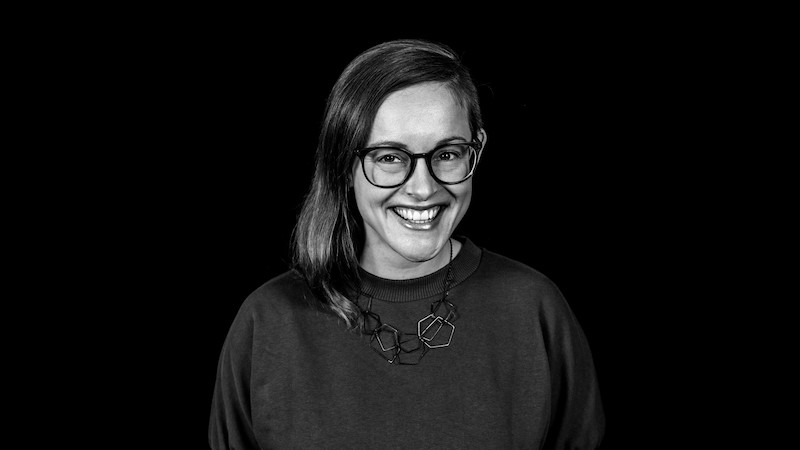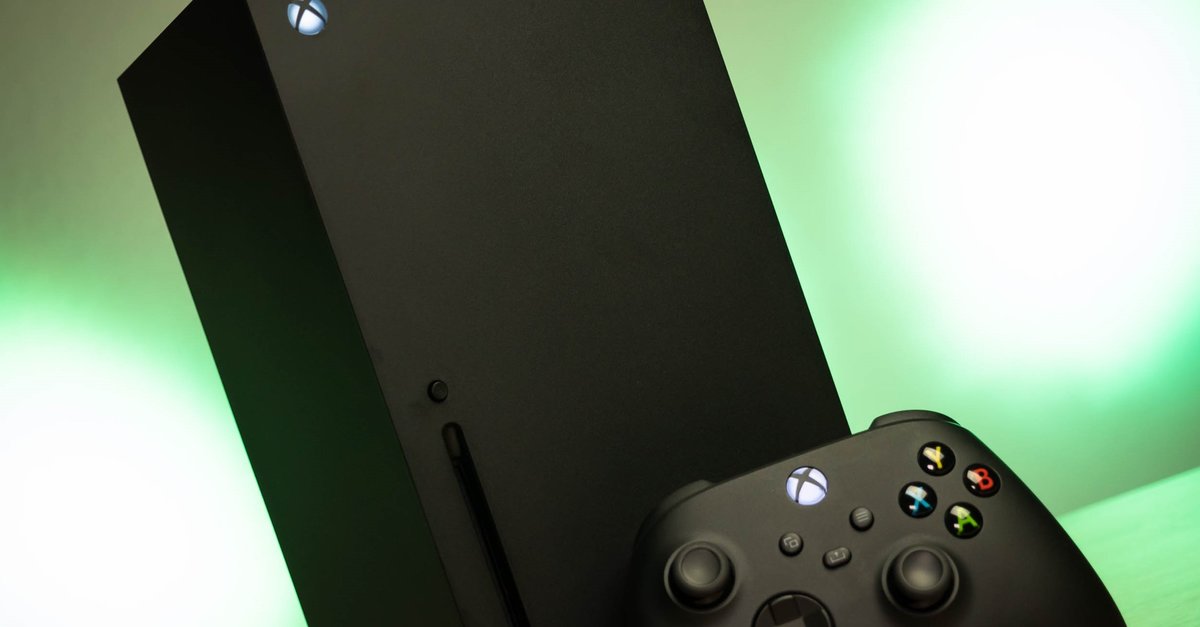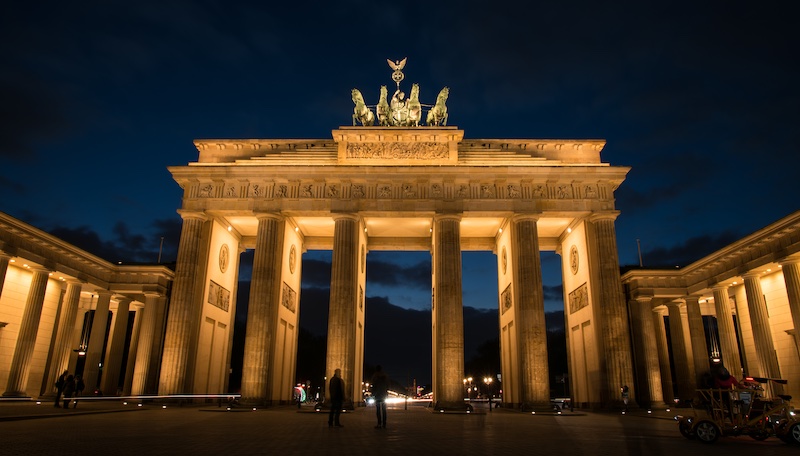What does an experience designer actually do?
Digitization is changing our working world from the ground up. This is why new job descriptions are emerging. But what is hidden behind the designations? We want to make that tangible in “And what are you doing?” Today: Ann Eckert, Experience Designer at Publicis Sapient.
Contents
What does an experience designer actually do?
BASIC thinking: Hi Ann, you work as an experience designer Publicis sapient. Describe to us in four sentences how you explain your job to friends and acquaintances.
As a consulting firm for digital business transformation, Publicis Sapient helps established companies to achieve sustainable competitive advantages in the increasingly digital world.
In order to open up new potential for added value and growth for our customers, we work on existing digital platforms, services and products or develop them from scratch, with the focus always being on the user experience.
As an experience designer, I bring the perspective of the users into our projects using different methods, sketch possible solutions as wireframes or prototypes, and try them out with the users in order to further improve them. To do this, I need to understand both the specific user requirements and the respective context in detail.
Everyday work as an experience designer
What does a normal day in your job look like and how do you start the day?
One of the first appointments of the day is usually the “Daily”. As part of this short daily meeting, we as a project team discuss with whom there is a need for coordination, for example, where missing information is blocking us or what new details there are that affect the entire team.
Then I start with my tasks. In my current project, I am working with a colleague who focuses on the customer experience strategy, so-called user journeys. To do this, we conducted workshops and interviews with people from the target groups. We are currently collating the knowledge we have gained from this.
There are phases in which we work together intensively to discuss and classify findings. In other phases, everyone works on their own and informs the others about the progress. We use online design or whiteboarding tools that allow us to work on the same document at the same time, and not just since we started working from home.
Our work is based on an agile mindset. We openly share the project status with the customer and involve everyone involved closely in our thought process. After all, they are the experts on whose expertise we depend for the success of the project. Therefore, on many days there is at least one coordination meeting or one working session with our customers.
The tasks as an Experience Designer
What tasks fall into your area and how do you personally define your job as an experience designer?
As an experience designer, it is important to me not only to meet the needs of the users, but also to surprise or challenge them in a positive way. Therefore, I see it as my task to think beyond user requirements, to inspire users with unexpected interactions or options and to anticipate future needs.
It is important to align these user needs with the goals of our customers, because not every user need fits a customer’s vision and strategy. Some typical tasks for Experience Designers are: Developing a deep understanding of customer requirements through workshops and work sessions.
To conduct continuous user research, primary or secondary, which can have a different focus depending on the project phase
To “match” the user needs and business requirements of the customers, i.e. to bring them into line, and to visualize them using wireframes (sketches) and prototypes (clickable screen sequences).
Validating these wireframes or prototypes in user tests or deriving indications of potential for optimization based on usage data from existing applications. Collaborate across disciplines with interface designers and developers for detailing and implementation
Integration into the corporate structure
How is your position integrated into the company structure? Say: Who do you report to and with whom do you work?
In general, we have pleasantly flat hierarchies at Publicis Sapient. First and foremost, I always feel committed to the project team, because we organize ourselves, plan our tasks and availability, and define together what we can achieve.
Each project or customer account is managed by a management team to which we report. For us, these colleagues are the first point of contact for all project-related challenges. From a professional point of view, we have established a system of people managers and managees.
My people manager regularly discusses the goals I want to achieve with me and supports me in my professional and personal development. The people managers are the first point of contact for everything that cannot be clarified directly in the project. I myself take on this role for some of my colleagues and draw a lot of energy from it.
The job description as an experience designer
The role of the experience designer is different in every company. What perspectives are you missing out on that are fundamentally part of the job profile?
Right now I’m really enjoying working on a customer project for which we can conduct extensive user research. Unfortunately, this is not always the case. In-depth user research is often the first to be discarded because it is considered too costly or time-consuming. There are also ways to carry out corresponding surveys quickly and without much effort.
However, these options do not always apply. For example, certain target groups are difficult to address on the street. Online recruiting via user research tools also has weaknesses. We always try to get at least an approximation to our target group and to gain relevant insights.
Fun and gratitude at work
What do you enjoy most about your job and what are you particularly grateful for?
As an experience designer, you come into contact with a wide variety of subject areas that you need to familiarize yourself with. That motivates me. I find it extremely exciting to keep immersing myself in new worlds, to exchange ideas with experts from other fields, to understand their ways of thinking, perspectives and needs.
My job is to regularly think about complex relationships, for example to understand processes that we have to take into account when finding a solution, or to decode dependencies in product configurations. I enjoy working out which circumstances we can change and which are set.
This works best in a team. Experience design often acts at the interface between different “trades” and roles. Of course we’re not the only ones working on the user experience, we’re just the ones with it in the title. At Publicis Sapient, we work in multidisciplinary teams that combine a wide variety of skills.
What unites us all is that we think and act in a user-centric and solution-oriented manner. The exchange of knowledge and experience is very important to everyone. For me, these are ideal conditions for being creative. I am particularly grateful for this inspiring work environment.
How does one actually become an experience designer?
In the digital industry, there is often no longer the classic training. How did you get your position?
In my opinion, it is exactly the opposite in the area of experience design. Various training opportunities have been established here in recent years. I started around twelve years ago as a career changer.
While I was studying international information management, I came into contact with topics such as human-machine interaction and usability, but I didn’t acquire any knowledge of design methods or interface design.
I then got involved through an internship in the Usability Research department. I gained initial experience with a wide variety of applications and quickly realized that I would rather design solutions myself than “just” uncover optimization potential.
After a few years of “learning by doing” in a start-up, I got the chance at Publicis Sapient to deepen my knowledge in an international consulting company with a diverse team. To this day, I learn something new with every project. In recent years, more and more young colleagues have joined us who had “User Experience Design” as the core of their studies and already bring valuable knowledge with them.
Tips for career changers
What tip would you give to a newcomer or interested career changer who also wants to become an experience designer?
Don’t hesitate, just do it! We are always looking for talent. Newcomers and career changers often worry that they don’t have a large portfolio to show for themselves. That shouldn’t be a reason not to try. Of course, screens of specific services or products are impressive in the application.
However, a good interview will always aim to understand how you proceed, how you identify the core of a problem and develop ideas for a solution. If you can argue your approach and back it up with concrete examples, a lot is gained. Getting started is easier than you think.
Also interesting:



